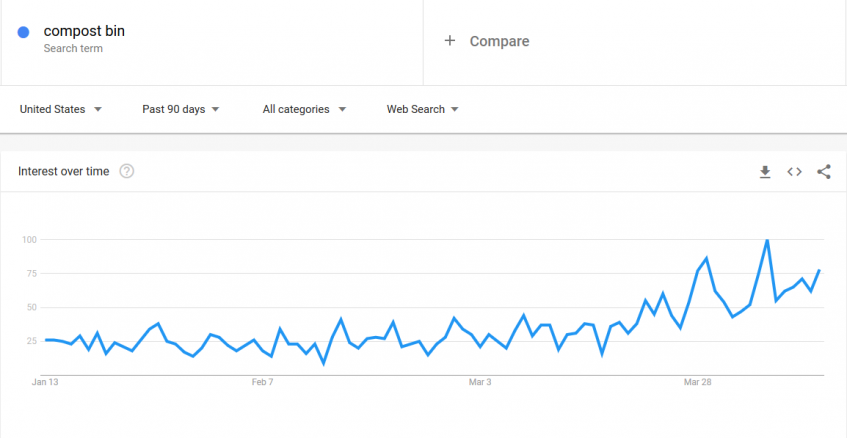
How to Launch an eCommerce Business From Your Home Office
Editor’s note: This is a guest post written by Derrick Chen, CEO of AndMakers.
If you’re like billions of other people around the world, you’ve had a whole lot of time lately to sit at home and think about all the things you should be doing whether it be to learn a new language, tell people you love them more, etc. Thought about making extra income from home? Enter eCommerce.
Nowadays, you really can operate a thriving eCommerce business from just about anywhere, given the right partners and connections.
“Today may just be the best time to kickstart your eCommerce business. The current COVID-19 pandemic has accelerated consumer online buying for good. An industry that was on pace to account for 10% of the U.S. retail market in 2019, according to eMarketer, has shown massive gains over the past six months, with billions of dollars of consumer spending ready to be had.”
– Derrick Chen, CEO of AndMakers, a company that helps build connections between overseas manufacturers and brands and major retailers in the U.S. market.
Here we’ll cover two big decisions you’ll have to make in order to start your journey: where to sell your products and how to determine which products to make and sell, depending on where you want them to be listed.
How to Get Your Products in Front of U.S. eCommerce Customers
Manufacturers looking to break into the U.S. eCommerce market have three main options:
- Build your own online store
- Sell on huge retail properties (Amazon and eBay) that take care of fulfillment
- Find other third-party retailers that can feature and sell your products
Building Your Own Online Store
Creating an online store means you’ll have to do the following:
- Sign up with an eCommerce platform (e.g. Shopify, BigCommerce) to set up your store
- Buy an online domain
- Design the store
- Set up your product merchandising: product descriptions, specs, pictures, and pricing
- Create a marketing plan (Facebook ads, Google ads, display ads, etc.)
- Set up your logistics, whether building your own order processing and fulfillment system or finding a 3PL (third-party logistics company) to ship your products
Let’s dive deeper into the advantages and disadvantages here.
Pros: Everything is within your control. You set the pricing, you control the orders and shipping (or at least find your own 3PL), you cut out the middleman (and a layer of fees).
Cons: It takes a lot of skills and resources to succeed. Most manufacturers don’t have experience in digital marketing and product merchandising and logistics, and building an in-house team to handle the full set of skills and responsibilities is costly, especially when there are bills to pay before orders start flowing in. If you’re doing your own shipping, that means you’re paying for a warehouse/storage space as well. The potential payoff is big, but the upfront costs are much higher than your other options.
Selling on Amazon
Amazon FBA (Fulfillment by Amazon) provides easy entry into the American eCommerce market without a lot of upfront costs – or a lot of control on your end. Amazon FBA is a well-established program that walks you through product placement and merchandising and provides warehousing – all at a cost.
Pros: You save a ton on upfront costs of hiring, warehousing, etc. You open up your products to Amazon’s massive customer base (Amazon represents almost 40% of the U.S. eCommerce market). It’s a plug-and-play system that allows you to get up and running quickly without worrying about shipping, returns, customs, or storage.
Cons: Amazon FBA charges you a monthly fee and takes a big cut of your revenue. In addition, storage fees increase during peak seasons, which leaves you doubly vulnerable to extra charges.
Drop-Shipping on Other Third-party Retailers
The third option is selling through drop-ship retailers that aren’t Amazon; leading vendors for home and garden include Wayfair, Overstock.com, The Home Depot, Macy’s.com, and Houzz.
Getting on these sites isn’t as easy as signing up for FBA; you need to establish partnerships with drop-retailers, which often requires dedicated salespeople. However, once you’re up and running with these retailers, you’re in a sweet spot between doing everything yourself and being one of millions of numbers in the FBA system.
Pros: You don’t need to have in-depth marketing knowledge since the retailers can market your products for you. You can choose to ship your products on your own or find your own 3PL – preferably one with more flexibility and partnership resources than FBA. Pricing is also straightforward; you get the wholesale price when your product is sold, and the third-party vendor gets the rest.
Cons: There is a bit of a barrier to entry – namely, making connections with your desired drop-ship retailers. Overseas manufacturers especially don’t come equipped with knowledge of the U.S. market or built-in connections that can help you break in. Once you do break in, you should know that the more retailers you work with, the more time you’ll need to spend on data entry as each retailer has a different system for entering product information.
How to Assess Which Retailers Are the Right Partners for Your Products
Your ideal retail partners depend on your company’s goals; the same manufacturers who find success on Walmart, which specializes in low prices for everyday shoppers, might not be a fit for the higher-end shoppers on Pier 1 Imports. If your company has very strong values, consider aligning with a retailer who shares those values. For example, if your product is focused on the maker’s lifestyle, Etsy may be a good fit.
In any case, you should focus on retailers who have users seeking your product line. Home & Garden manufacturers should consider Wayfair, Amazon, Houzz, Overstock, Walmart, Macy’s, and Target.
If you are interested in learning what might “stick,” then go for marketplaces like Amazon, Rakuten, or Modalyst. These channels have high traffic volume that will allow you to more quickly realize which products are gaining customer interest.
If you’re a relatively new manufacturer looking to build your brand and product reputation and depend on a layer of customer service (e.g. if they’re relatively fragile or require multi-step assembly), you may want to start with niche retailers known for their customer service. Poor customer experience on a huge retail platform can leave your brand with one-star reviews and a damaged reputation, which is especially important to prevent when your brand is new or unknown and doesn’t have a history of success to work with.
How to Assess Which Products to Make and Sell
If you’ve already identified your top 2-3 desired retail partners, go to those sites and do a search for top categories to start. If you’re working on your own, that’s the easy part.
There are tools that will help provide you with market research help; Google Trends and Google Keyword Planner, for instance, are free tools to give you high-level and more granular insights on which categories are in demand. As COVID-19 swept the U.S. in March, forcing people into quarantine and increasing the people cooking at home, manufacturers introducing compost bins to the market would have found a growing audience:


There are more tools than Google’s products, but this research will be fairly manual. If you do go this route, study your preferred retail partners for pricing ranges and top buying attributes, and study top-reviewed products across all points of the pricing spectrum.
In general, customer reviews are a rich source of information and can give you insight on highly valued attributes and potential detriments to products.


Bottom Line
Is there more to starting an eCommerce business than that? Well, yes. You need to consider fulfillment, marketing, inventory management, tech integration, and a lot more.
Start with the basics – what you want to sell and where you want to sell it – to take part in the retail revolution that’s putting billions of dollars of opportunity in the eCommerce industry as we speak.
Good luck!


He founded AndMakers to help build connections between overseas manufacturers and brands and major retailers in the U.S. market, thus enabling a more dynamic, thriving global marketplace.




